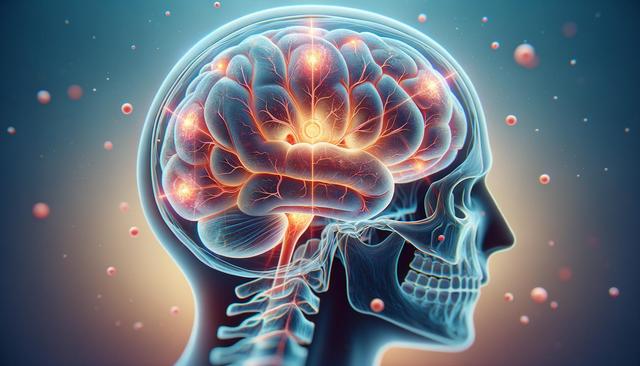
Chronic migraine: warning signs, triggers, lifestyle adjustments, medications, alternative therapies, and prevention strategies
Recognizing the Warning Signs of Chronic Migraine
Understanding the early warning signs of chronic migraine can help individuals respond proactively before a full attack sets in. Chronic migraine is defined as experiencing headaches on 15 or more days per month, with at least 8 of those days presenting migraine features. Common initial symptoms include visual disturbances, such as seeing spots or flashing lights, increased sensitivity to light and sound, and mood changes like irritability or depression. Some people also report food cravings, neck stiffness, or frequent yawning in the prodrome phase. Recognizing these patterns allows for early intervention, which can sometimes reduce the severity or duration of an episode. Being aware of how your body signals an oncoming migraine is key to developing personalized and effective management strategies.
Common Triggers and How to Identify Them
Identifying and avoiding triggers is a crucial step in managing chronic migraine. Triggers vary widely from person to person, but some common ones include:
- Changes in sleep patterns
- Hormonal fluctuations, particularly in women
- Food additives like MSG or nitrates
- Stress and anxiety
- Environmental factors such as bright lights or strong smells
Keeping a migraine diary can be an effective way to track potential triggers. By noting the timing, intensity, and circumstances of each migraine, patterns often emerge that reveal specific causes. This information can be shared with healthcare providers to develop a more targeted treatment plan. Additionally, understanding your own triggers can empower you to make informed decisions about daily habits and lifestyle choices.
Lifestyle Adjustments That Support Migraine Management
Making thoughtful lifestyle changes can significantly reduce the frequency and intensity of chronic migraines. While these adjustments may not eliminate migraines entirely, they can complement medical treatments and provide better control. Key strategies include:
- Maintaining a consistent sleep schedule
- Staying hydrated throughout the day
- Engaging in regular, moderate physical activity
- Managing stress through techniques like mindfulness or yoga
- Eating balanced meals at regular intervals to prevent blood sugar drops
Adopting these habits creates a stable internal environment that may lessen the likelihood of triggering a migraine. It’s also helpful to create a quiet, dark space at home where one can retreat during an episode. Building a migraine-friendly lifestyle often takes time and experimentation, but the long-term benefits are well worth the effort.
Medications and Their Role in Treatment
Medication plays a central role in managing chronic migraine, both for acute relief and long-term prevention. Acute treatments are designed to stop a migraine once it starts and may include over-the-counter pain relievers or prescription medications that target inflammation and nerve pain. Preventive medications, on the other hand, are taken daily to reduce the overall frequency and severity of migraines. These may include certain blood pressure medications, antidepressants, or anti-seizure drugs, depending on the individual’s health profile and response to treatment. Some patients also benefit from newer therapies that target specific migraine-related proteins in the brain. It’s important to work closely with a healthcare provider to find the most appropriate medication regimen, as effectiveness and side effects can vary widely. Regular follow-up appointments help ensure the treatment plan remains aligned with changing needs and symptom patterns.
Exploring Alternative Therapies and Preventive Strategies
In addition to conventional treatments, many individuals with chronic migraine explore alternative therapies to complement their care. These approaches often focus on reducing inflammation, improving circulation, or calming the nervous system. Common options include:
- Acupuncture
- Biofeedback therapy
- Cognitive behavioral therapy (CBT)
- Herbal supplements like magnesium or riboflavin (under medical supervision)
- Aromatherapy using essential oils such as peppermint or lavender
These therapies may not work for everyone, but some people find them to be a valuable part of a broader management plan. Preventive strategies also involve minimizing exposure to known triggers and maintaining a structured daily routine. In some cases, working with a multidisciplinary team, including neurologists, dietitians, and mental health professionals, can offer additional support. Education and self-awareness remain at the core of effective prevention—knowing your body and how it reacts to various stimuli allows you to take proactive steps toward reducing migraine frequency and improving overall well-being.
Conclusion: Managing Chronic Migraine with a Holistic Approach
Living with chronic migraine demands a multi-faceted approach that goes beyond simply treating symptoms. By recognizing early warning signs, identifying personal triggers, making targeted lifestyle changes, and exploring both medical and alternative therapies, individuals can take meaningful steps toward better management. Ongoing communication with healthcare providers, combined with personal awareness and commitment, lays the foundation for improved quality of life. While chronic migraine can be challenging, a proactive and informed approach can make day-to-day life more manageable and less disrupted by debilitating episodes.